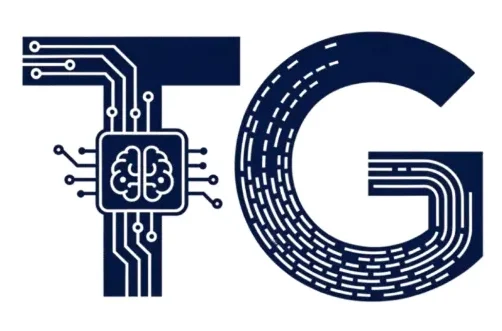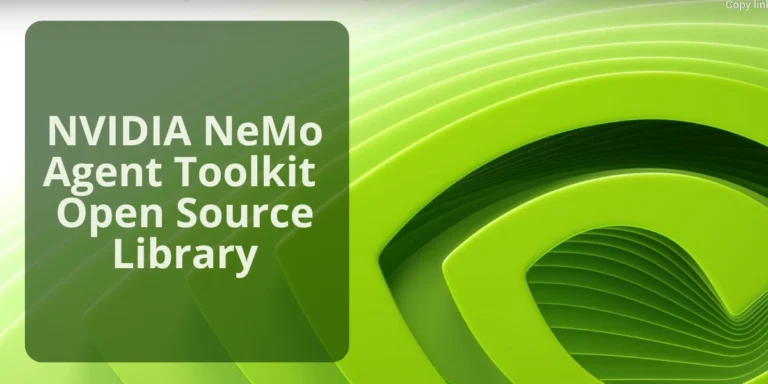Business organizations must deliver instant, personalized service at a big scale in today’s time. The NVIDIA NeMo Agent Toolkit would be perfectly helpful for them. It is an open source Python library designed to streamline the creation of intelligent and multi agent workflows. Whether you are handling customer support, IT helpdesks, or HR inquiries, NeMo Agent Toolkit would be helpful. You need to build, deploy, and optimize AI agents that work together seamlessly.
Table of Contents
Who are the users
- Enterprise Developers & Architects could build custom AI solutions that integrate with your existing systems ERP, CRM, knowledge bases, and more.
- AI/ML Engineers could experiment with different LLMs, retrieval augmented generation (RAG) pipelines, and reasoning over action patterns.
- Technical Teams (IT, HR, Finance) could rapidly prototype chatbots and assistants without deep expertise in LLM internals.
- DevOps & MLOps Practitioners could deploy agents as microservices, monitor performance, and iterate on tooling.
When Will It Be Available
The NVIDIA NeMo Agent Toolkit is already available as an open source project on GitHub and PyPI. You can install it today via:
pip install nemo agent toolkit
Regular updates ensure compatibility with the latest NVIDIA frameworks, LLMs, and telemetry standards.
What Exactly Is This Toolkit
At its core, the NeMo Agent Toolkit is:
- A CLI Driven: Quickly generate a project template (workflow create) complete with pyproject.toml, config.yaml, and agent skeletons.
- A Configuration First Framework: Define agents, tools, and workflows in YAML no hard coding. Swap models or endpoints by editing a single file.
- A Multi Agent Master: Supports ReAct style reasoning over action agents and multi Retrieval Augmented Generation (RAG) pipelines.
- A Production Microservice: Turn any agent into a FastAPI based REST endpoint with simple commands, ready for NVIDIA NIM or Kubernetes deployments.
- Built In Observability: Leverage OpenTelemetry, profiling, and telemetry dashboards to track usage, latency, token costs, and escalation points.
Why You Need it
Instead of monolithic chatbots, you get specialized agents that collaborate. For example, Order Status, Technical Support, Refund Processing. Also Conversation history, metadata, and intermediate results travel with the customer as they move between agents. NeMo Guardrails enforce company policies, brand guidelines, and legal constraints. It will automatically reject “jailbreak” attempts or unsafe content.
Detailed metrics will show bottlenecks and training opportunities. It will swap out LLMs or add new tools without rewriting your codebase. You can deploy agents as lightweight microservices that autoscale to handle thousands or millions of concurrent requests.
How to Start it
- Install & Scaffold
- pip install nemo agent toolkit
nemo agent workflow create name customer_service
- Configure Agents & Tools
Edit config.yaml to define:
- Your LLM client (e.g., Llama 3.1)
- Agent types (Router, Order Status, Tech Support, etc.)
- Tools (API connectors, RAG indexes, policy engines)
- Local Testing
- nemo agent workflow run config config.yaml
- Interact with agents via CLI or HTTP to confirm correct routing and tool execution.
- Add Guardrails
Define policy rules in a guardrail file to automatically validate inputs and outputs. - Deploy as a Microservice
- nemo agent workflow serve config config.yaml as service
- This spins up a FastAPI endpoint you can expose behind your API gateway.
- Monitor & Iterate
Hook into the built in telemetry dashboard to analyze usage patterns, latencies, and failure rates. Update your YAML and redeploy in minutes.
Use Cases of NVIDIA NeMo Agent Toolkit
- Enterprise Customer Service: Route incoming queries through a “Router” agent, then delegate to specialized agents for orders, refunds, or technical support seamlessly escalating to human agents when needed.
- IT Helpdesk Automation: Auto resolve password resets, software installs, and network diagnostic steps using a scripted troubleshooting workflow.
- HR & Payroll Assistants: Answer policy questions, generate offer letters, and process time off requests by combining RAG lookups with internal databases.
- Financial Services Advisors: Provide account summaries, fraud alerts, or personalized investment suggestions by orchestrating market data tools and risk assessment engines.
- Legal & Compliance Bots: Screen incoming contracts for key clauses, flag high risk language, and prepare summary briefs for human review.
FAQ
1. Is the NeMo Agent Toolkit free to use?
Yes, it is completely open source and free to use. You can find it on GitHub and install it from PyPI.
2. Can I use it with models other than NVIDIA’s?
Absolutely. The toolkit is framework agnostic and works with a wide range of LLMs including open weight models like Llama, Mistral, and others.
3. Do I need to know deep AI concepts to get started?
Not at all. The configuration first design means most of the setup is done using YAML files. You can build and deploy agents without needing advanced machine learning knowledge.
4. How does it help with compliance and safety?
NeMo Guardrails are built into the toolkit to ensure that AI outputs are compliant with your organization’s policies, legal standards, and brand guidelines.
Conclusion
The NVIDIA NeMo Agent Toolkit represents a shift from single purpose chatbots to collaborative, multi agent AI systems. It offers modular configuration, robust guardrails, and enterprise grade observability. So it empowers organizations to deliver faster, more consistent, and fully compliant services. It could be useful across customer support, IT, HR, finance, and beyond.
Are you ready to elevate your AI strategy? Explore the toolkit on GitHub, get your first agent with a few CLI commands. You will witness how NeMo turns complex workflows into agile, observable, and scalable AI services.
Now you can empower your teams, delight your customers, and drive real business impact with NVIDIA NeMo Agent Toolkit.
You might be interested in following article
AI’s Role in Fighting Cancer: Current Breakthroughs and Future Promise
Artificial General Intelligence (AGI) 2025: The Next Frontier of AI Explained

